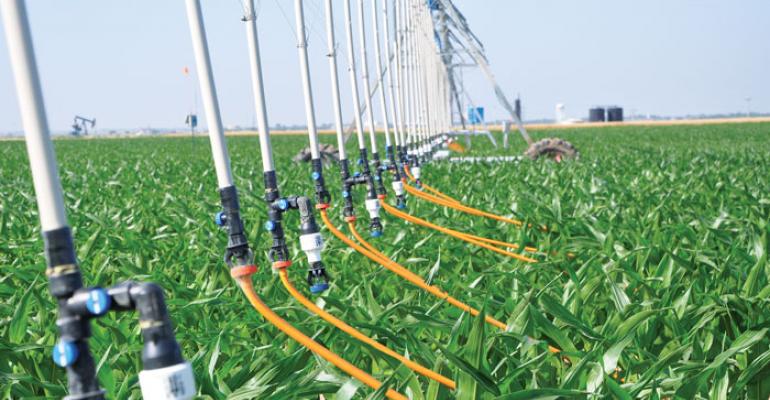Crop irrigation uses 70% of global fresh water extractions. Irrigated crops make up 40% of globally available food calories. Advanced technologies that could provide irrigation efficiency (IE) are funded and supported to improve the crop per drop. This provides private benefits to irrigators and is supposed to save water for reallocation of water for cities and the environment. However, increased irrigation efficiency rarely delivers increased water availability.
Researchers show that increases in irrigation efficiency also needs robust water accounting and measurements, a cap on extractions at the same time.
Previously nonconsumed water losses at a farm scale (like runoff) are frequently recovered and reused at a watershed and basin scale.

Five steps, centered on water accounting and research advances will promote more effective policy actions.
1. physical water accounts need to be developed from the farm-scale to the basin scale to make transparent “who gets what and where” to support decision-making in the public interest. This requires measurement or estimation of all inflows, water consumption, recoverable return flows, and nonrecoverable flows to sinks.
2. reductions in water consumption are achievable by decreases in water extractions through a direct cap on water offtakes or on the irrigated area.
3. to ensure desired outcomes are delivered, risk assessments are needed when evaluating the effects of increased IE, as are accurate measurements from on-the-ground monitoring of flows. Policy-makers must account for uncertainties in key water parameters when calculating water flows.
4. the payoff from subsidizing IE depends on whether the benefits exceed the costs, including those associated with reduced return flows. Comprehensive methods of valuation are needed to make tradeoffs explicit and clear.
5. the effects of policy actions on the behavior of irrigators must be evaluated. Neither IE nor water extractions are constant: They vary by irrigator and differ by land and soil characteristics, crops grown, time of year, and weather conditions. The dynamic changes need to be measured, monitored over time.

Brian Wang is a Futurist Thought Leader and a popular Science blogger with 1 million readers per month. His blog Nextbigfuture.com is ranked #1 Science News Blog. It covers many disruptive technology and trends including Space, Robotics, Artificial Intelligence, Medicine, Anti-aging Biotechnology, and Nanotechnology.
Known for identifying cutting edge technologies, he is currently a Co-Founder of a startup and fundraiser for high potential early-stage companies. He is the Head of Research for Allocations for deep technology investments and an Angel Investor at Space Angels.
A frequent speaker at corporations, he has been a TEDx speaker, a Singularity University speaker and guest at numerous interviews for radio and podcasts. He is open to public speaking and advising engagements.


Thanks to CO2 fertilization, plants use water more efficiently now so much of the world is greening. They also are more resistant to pollution, cold, and heat. Thanks, SUVs!
Thanks to CO2 fertilization plants use water more efficiently now so much of the world is greening. They also are more resistant to pollution cold and heat. Thanks SUVs!
Water management is complex and dynamic and requires better understanding and measurement” That title is kinda stating the obvious, other great lines include: “reductions in water consumption are achievable by decreases in water extractions” “. to ensure desired outcomes are delivered, risk assessments are needed” “the payoff from subsidizing IE depends on whether the benefits exceed the costs,” “the effects of policy actions on the behavior of irrigators must be evaluated
Water management is complex and dynamic and requires better understanding and measurement”” That title is kinda stating the obvious”””” other great lines include:””””reductions in water consumption are achievable by decreases in water extractions””””””””. to ensure desired outcomes are delivered”””” risk assessments are needed””””””””the payoff from subsidizing IE depends on whether the benefits exceed the costs””””””””””””the effects of policy actions on the behavior of irrigators must be evaluated”””””””
“Water management is complex and dynamic and requires better understanding and measurement” That title is kinda stating the obvious, other great lines include:
“reductions in water consumption are achievable by decreases in water extractions”
“. to ensure desired outcomes are delivered, risk assessments are needed”
“the payoff from subsidizing IE depends on whether the benefits exceed the costs,”
“the effects of policy actions on the behavior of irrigators must be evaluated”
Thanks to CO2 fertilization, plants use water more efficiently now so much of the world is greening. They also are more resistant to pollution, cold, and heat.
Thanks, SUVs!